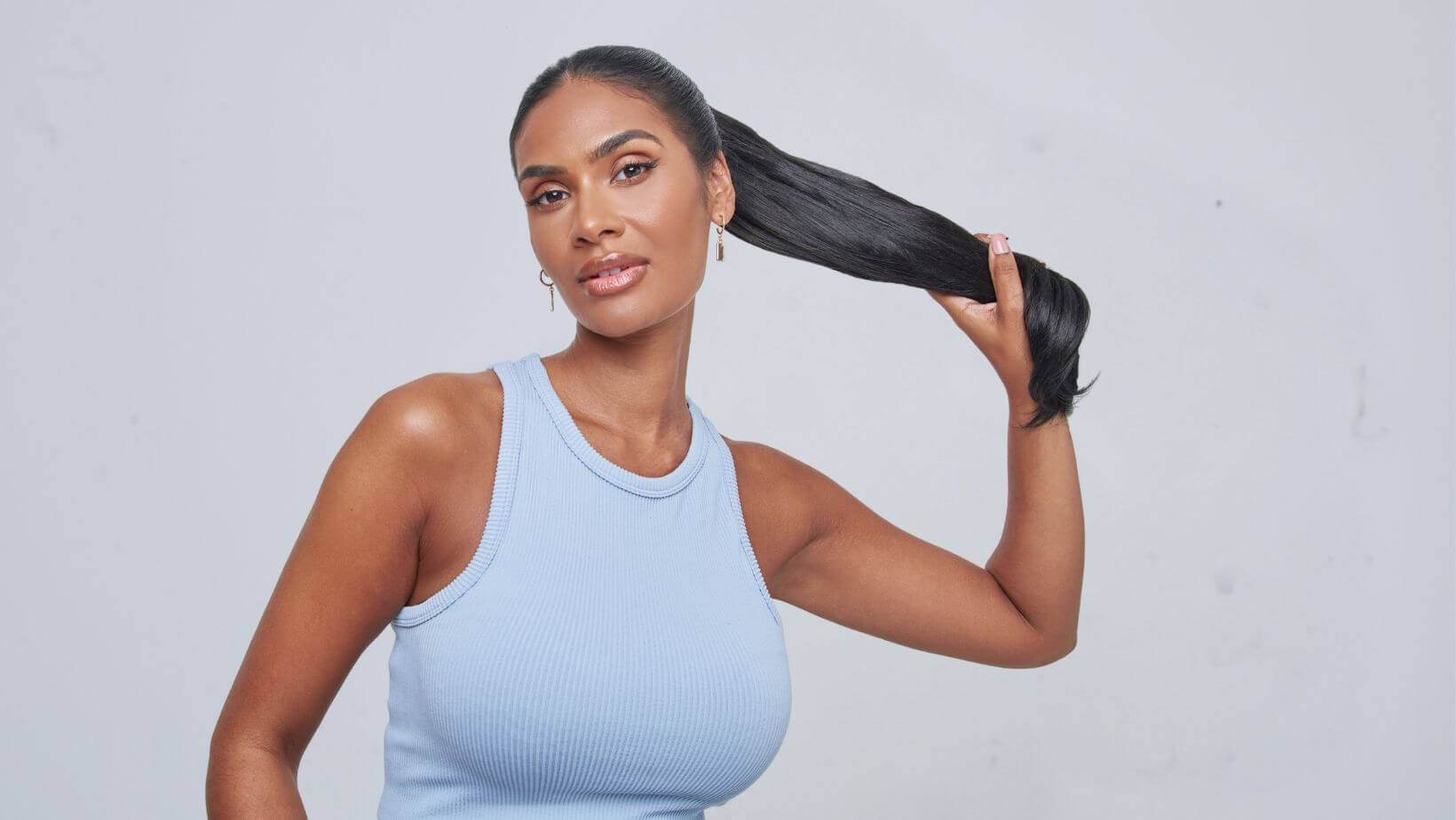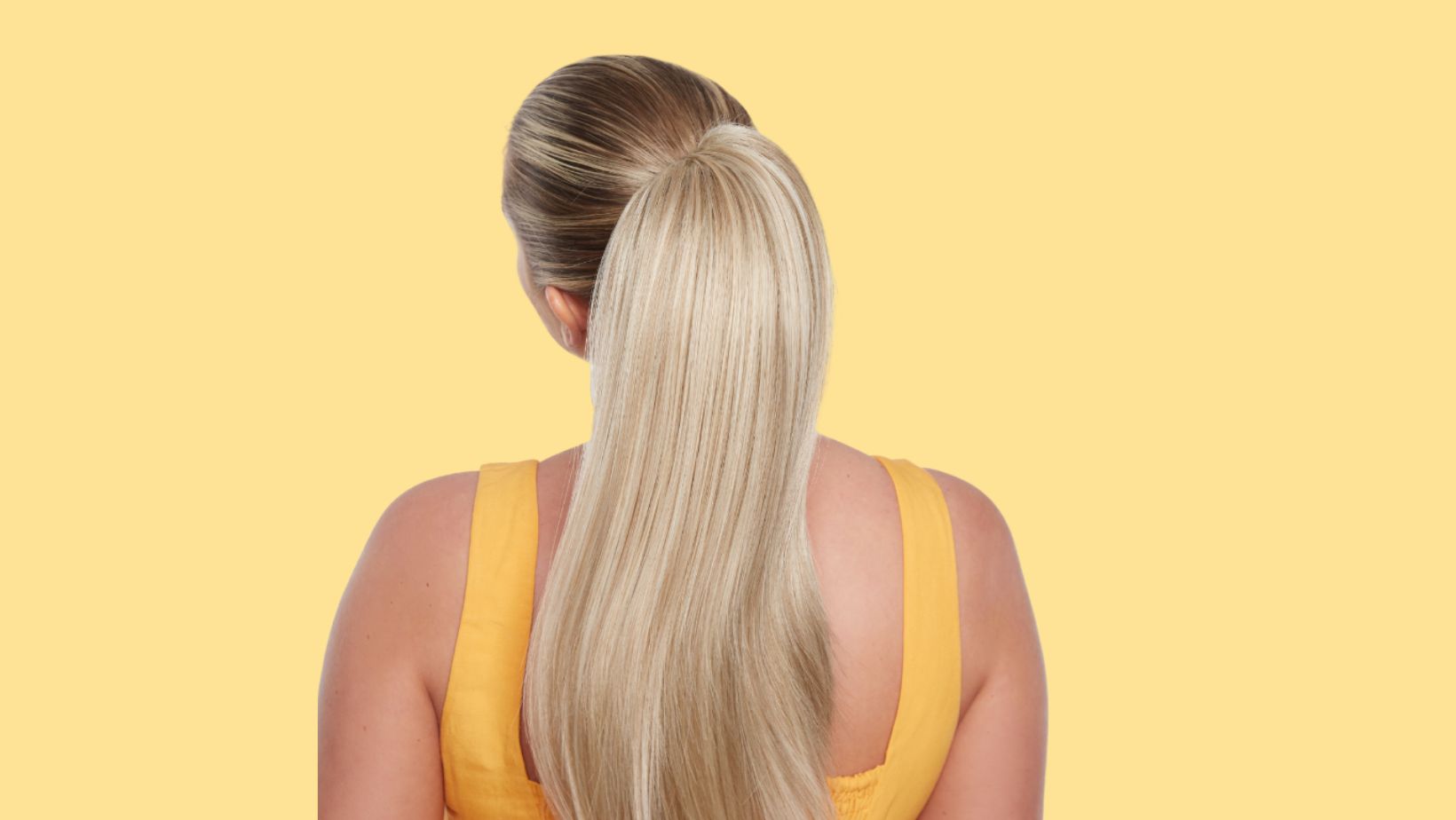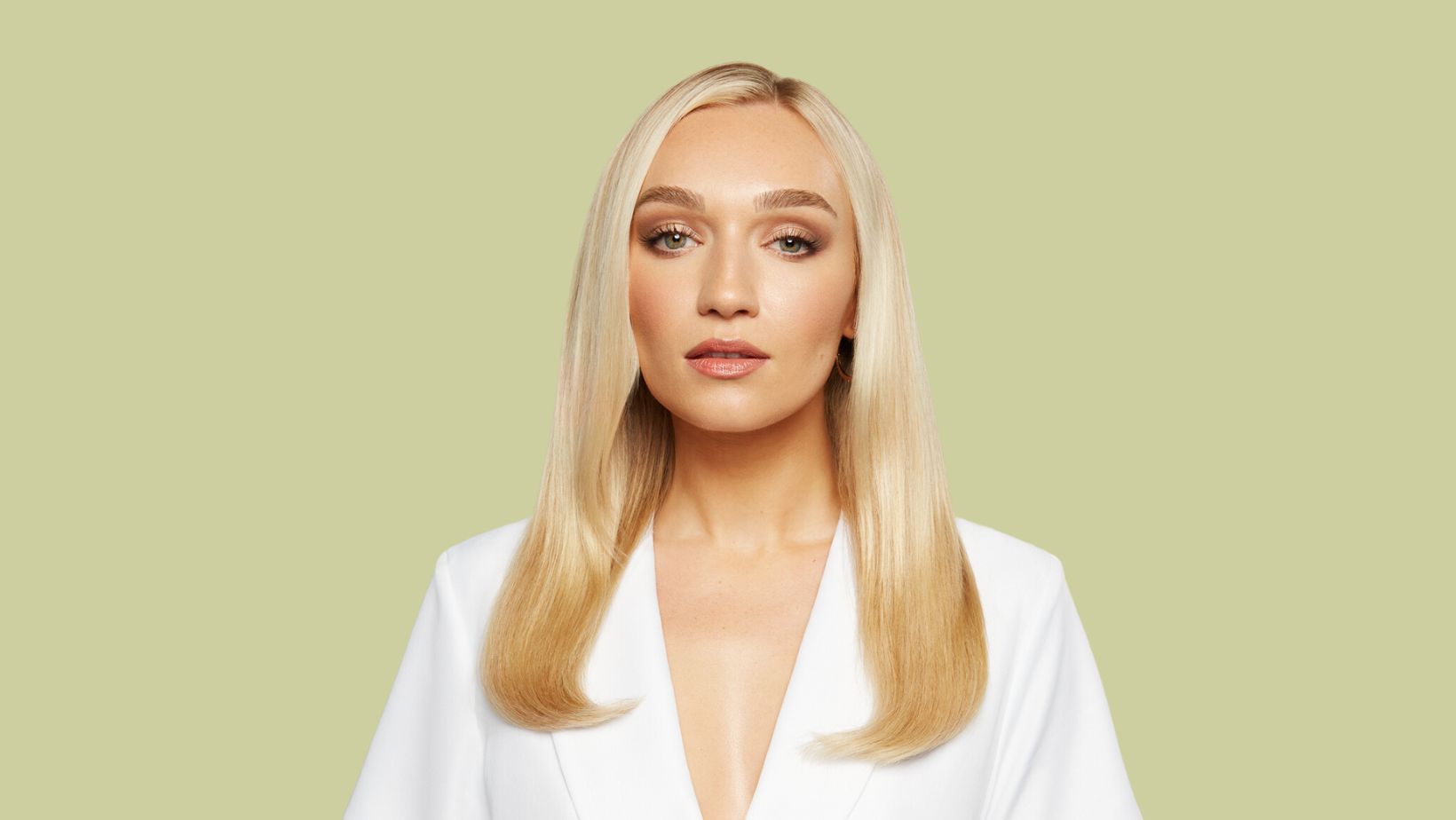Why Am I Shedding So Much Hair?

Why Am I Shedding So Much Hair?
Feeling like you’re losing your hair can be such a worrying time, but how much hair shedding is normal and what can you do about it? Keep reading to learn more…
Keep ReadingHair shedding feels like every woman’s nightmare. There is nothing worse than finding your hair EVERYWHERE and having to trail around the house with a lint roller in hand! However, there are certain times when a woman sheds more hair than usual, and it is completely natural to feel concerned about it.
At Stranded Hair Group, we are committed to making women feel confident. Losing your hair can have such a negative impact on your self-esteem, however, our clip-in hair extension brand is built around the basis of giving our customers a little everyday luxury to help them feel like themselves again.
Part of our commitment to your confidence is also built around keeping our customers educated. Our team of industry professionals works hard to not just supply the best products, but also teach you the best of what we know. And that’s why we write blogs, like this one.
In this blog, you will learn about the differences between hair shedding and hair loss, the causes of both and ways in which you can try to reduce it. By the end, not only will you feel confident in your newfound knowledge, but assured of what you can do next - whether that be reaching out for help, reading more or investing in your own piece of everyday luxury.
- Do I have hair shedding or hair loss?
- Causes of hair shedding
- Causes of hair loss
- How to reduce hair shedding
- When to be concerned about hair shedding
Do I have hair shedding or hair loss?
Hair shedding and hair loss seem to be terms used interchangeably, though they both mean different things.
Hair shedding refers to the end of the hair’s growth cycle; a very normal and natural process. Hair loss, on the other hand, refers to when hair falls out of the root; usually due to a cause that stops the hair from growing.
Vegamour has a very helpful blog, explaining the difference between the two.

Causes of hair shedding
As we know, hair shedding is part of the hair’s natural growth cycle - the endpoint, when new hair is growing in. However, there can be factors that contribute to more shedding than what you are used to.
Natural shedding
Sometimes women experience excess shedding due to the way their hair has been styled. Brushing your hair releases the shed hair from the healthy and, if you have had your hair styled in a certain way for an amount of time, it may all come out at once.
Ageing
When women age, like with the rest of their bodies, their hair growth cycle may begin to change. Some women’s growth cycles may slow down, meaning that new hair isn’t growing quickly enough to replace the shed hair. Therefore, they may experience excess shedding without new growth, resulting in thinning.
Hair breakage or damage
If your hair has been damaged, the shedding you may be experiencing might actually be hair breakage. Hair that has been overprocessed by dyes, chemicals and heat will become dry and brittle, making it prone to split ends and snapping.
Causes of hair loss
As hair loss is caused by something stopping the hair from growing, this means that something has changed in the person’s body to make it happen. These include medical, genetic and hormonal changes and conditions.
North Professional Hair has a fantastic article on hormonal hair loss in women, which covers many of these causes and ways to disguise them.
Hereditary condition
Some women genetically inherit a condition called Androgenetic, or female pattern, hair loss. This is when they have a sensitivity to a specific hormone, created by the conversion of testosterone into a more potent variant, dihydrotestosterone (DHT). DHT causes the hair to gradually get thinner until it stops growing altogether.
Hormones
Women’s hormones fluctuate through different stages throughout their lives. The fluctuation in different hormones has been known to cause hair loss, with some stages making it more common than others.
Puberty-related hair loss
When a girl enters puberty, there begins a huge shift in her hormones. This shift often comes with a sudden increase in dihydrotestosterone (DHT), which could result in hair loss for some people - though it isn’t very common.
Postpartum hair loss
During pregnancy, women tend to produce more oestrogen, which results in their hair staying in the growth phase of the cycle for longer. Pregnant women tend to notice they have noticeably thicker hair with far less shedding preconception.
Postpartum (3-6 months after birth), the oestrogen hormones begin to stabilise and the hair cycle starts to go back to normal. Due to the amount of hair growth women experience during pregnancy, all that hair begins to shed as the cycle rebalances. Once all the hormones level out, the hair growth cycle does return to what it was like before.
Menopausal hair loss
Menopause tends to be the final great hormonal change in a woman’s body. When women go through menopause, oestrogen and progesterone hormone levels reduce, which allows androgens such as testosterone to dominate. This begins to slow down the hair’s growth cycle, making the hair thinner and more prone to breakage or damage.
Medical condition
A very common side effect of thyroid disorders, such as hypothyroidism and hyperthyroidism, is hair thinning and loss. Thyroid disorders are caused by an imbalance of hormones, which slows down the hair’s growth cycle. However, with successful treatment, the cycle can return to normal.
It should be noted that some women tend to incorrectly blame their thyroid medication for hair loss, but there are no studies to support this claim.
How to reduce hair shedding
Whilst hair shedding is part of the natural hair cycle and hair loss is generally unavoidable, if you are susceptible to the causes, there are ways in which you can reduce the amount of hair you lose.
Healthy lifestyles
Research found by Women’s Health recommends that ‘ample exercise, meditation, and healthy habits’ are great ways to help reduce hair shedding and hormone-related hair loss.
Exercise is great for the body, but alongside meditation, it can also be a great way to reduce stress, boost mood and help balance hormones. Healthy habits are characterised as a balanced diet. Adding additional protein to your diet supports growth, including hair growth.
Vitamins and supplements
The same article also suggests that vitamins and supplements are great sources to reduce hair shedding and loss. North Professional Hair’s article on hormonal hair loss recommends Glowwa Hair Food, which is ‘found to benefit hair growth, reduce shedding, improve condition, increase shine and more’.
Glowwa also has hair supplements specifically made for menopausal women, Meno, made with natural DHT blockers and supports various other problems women with menopause face, including fatigue, cognitive function, mood swings, sleep quality and anxiety.
Medication or treatment
For specific conditions that cause hair loss, there are medications and treatments available through your doctor (should they find it necessary). For more information, book an appointment with your GP and visit the NHS page on hair loss.
Hair and scalp care
Looking after both your hair and the scalp it grows out of it is paramount to reducing hair shedding and hair loss. Not only will some of these things strengthen your hair, but some will also promote hair growth and help reduce stress.
Head massages
Head massages are brilliant for reducing hair shedding and hair loss. Head massages can help reduce your stress levels, but can also stimulate blood flow across the scalp to promote healthy hair growth. You can do these yourself with scalp massagers or a soft bristle brush, or book into your favourite hair spa!
Use the right products
Many different products can build the strength of your hair, claim to promote growth or refer to themselves as ‘thickening’ products. Speaking to your hairdresser is the best way to learn about salon-quality products that you can use at home.
Go to the salon
Not only should you visit your hairdresser for advice, but maintaining your hair is a great way to reduce hair shedding and loss. Getting regular haircuts doesn’t promote hair growth, but it does keep your hair healthy by trimming off dead ends and getting styles that flatter the hair you do have.
Keep styling to a minimum
Certain hairstyles can increase your risk of hair shedding and loss.
Hot tools are known to damage your hair, which will make it prone to breakage. Avoid hot tools completely, or turn the temperature right down and always ensure to use a heat protectant.
Tying your hair tightly into certain styles puts tension on both your hair and your scalp. This can sometimes lead to tension alopecia, where your hair will stop growing. Keep your updos loose and your scalp happy.
Semi-permanent hair extensions, which you would have fitted at a salon, can also lead to traction alopecia in some cases. If you are experiencing increased shedding or loss after getting extensions fitted, get them taken out and let your scalp relax! Why not opt for some temporary clip-in extensions instead, for additional confidence when you need it?
When to be concerned about hair shedding
Generally speaking, hair shedding is nothing to worry yourself about. However, when excess hair shedding occurs, known as hair loss, you should always seek medical advice. If you experience any of these signs of hair loss, report them to your GP:
Losing excessive amounts of hair
Losing excessive amounts of hair every day or in one large chunk is a reason to be concerned. This type of hair loss would most likely show when you are brushing or washing your hair and is more associated with stress.
Noticing gradual thinning
Gradual thinning is the most common sign of hair loss, generally associated with androgenetic or female pattern hair loss. This is typically noticed when the hair has thinned enough to see that your parting has broadened or your hairline has significantly receded.
Noticing large, circular bald patches
Some women experience hair loss through large, circular or patchy bald spots in different areas around their head, though it is not specific to any particular cause of hair loss.
Hair shedding alongside body hair loss
If you begin to experience hair shedding on your head, alongside shedding of your body hair, you should immediately see a doctor. This type of hair loss is not common and is a major cause for concern.
Next steps
You came to this article worried about how much hair you are shedding and rightly so. While this blog may have shown you that hair shedding is typically just a natural process, as part of the hair’s growth cycle, it may have otherwise helped you notice that something may be wrong.
Since reading this blog, you have been educated on the difference between hair shedding and hair loss, the various causes of both and ways in which you can help reduce it. You have also been taught the signs of hair loss, in case your shedding may need some more specialist support.
But what now?
Stranded is committed to making you feel confident, whether that's confidence in your knowledge or your appearance.
Everyday luxury shouldn’t have to cost a fortune and they shouldn’t have to be difficult to use. Our versatile range of hair extensions starts at just £15 with the 5-star-rated Flicky Messy Bun Scrunchie.
From ponytails to multi-piece clip-ins, clever fibre to human hair, we have hair extensions to meet every need and match every look. However, the greatest selling point of Stranded clip-in extensions is their ability to disguise hair shedding, without increasing the risk of further loss (by developing hair damage or traction alopecia).
For a little everyday luxury to support your hair health and look your best in moments of self-doubt, look no further than our clip-in human hair extensions. Made of 100% human hair in 4 lengths (14”, 16”, 18” and 20”) and either 4 or 5 clip-in attachments, these hair extensions are the perfect way to add length, volume and an extra dose of confidence.
Did you know most Stranded customers report owning more than two of our clip-in hair extensions? Join the confidence movement and get free expert colour-matching today!
Found this blog helpful?
If you found this article helpful, why not check out all our others? Stranded blog covers a huge range of topics, from human hair to hair masks.
You may find our blogs on ‘Guide to Ponytail Extensions for Thin Hair’ and ‘How to Choose Your Ideal Extension Length’ the most supportive, especially if you’re concerned about the amount of hair you shed.





